New Santa Fe Lives Up to its Considerable Promise

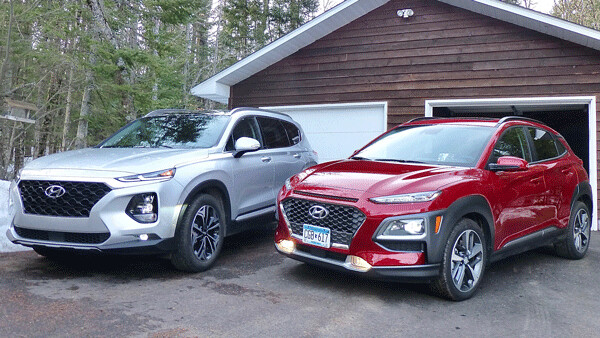
Just when you think you have Hyundai all figured out, they turn your perceptions upside down. Again.
The South Korean company made a corporate decision that they had pretty well mastered the art of delivering small and medium size cars that performed at about a class above and were priced at about a class below expectations and market levels. But they realized the trend worldwide was toward midsize to compact SUVs, so they had to expand their quite impressive array that included some very nice truck-like vehicles.
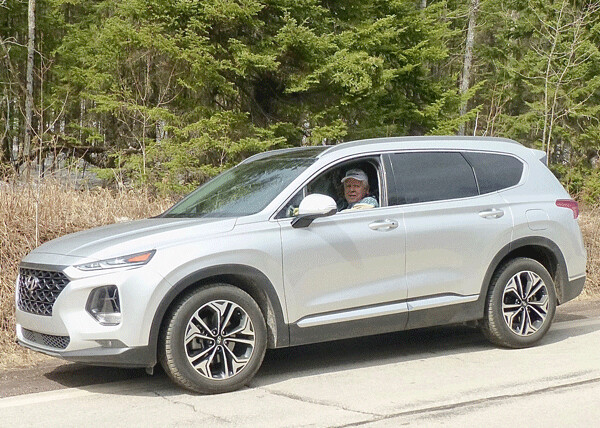
So about a year ago, Hyundai brought out the compact Kona, an amazing vehicle that won our award for New Car Pick of the Year for 2019. We are continuing an extended test of a Kona Ultimate, and we are thoroughly impressed. It also won the International Utility of the Year at the Detroit Auto Show and has captured virtually every other award within its grasp. In its haste to fill every niche, Hyundai also completely redid its Santa Fe midsize SUV.
The new Santa Fe was a totally different vehicle, made more compact but still leaving a nice spacing above the Tucson, which remains above the Kona. Nice, three-step size range, from Kona to Tucson to Santa Fe, each with their own personalities and all three benefitting by Hyundai’s technology, safety and features aimed at economy and durability.
When they thought nobody was looking, Hyundai snuck out more new SUVs, a smaller one than the Kona, another mid-sizer, and a larger SUV. But wait! We can’t keep up. And even Hyundai doesn’t seem able to keep up with its own design and production processes.
For example, while the Kona was winning all those SUV-of-the-year awards, the Santa Fe was virtually ignored, even from the time of its own introduction. The Santa Fe I wrote about at its introduction in the Utah mountains near Park City was nearly perfect from the standpoint of power, efficiency and technology. If you thought the old Santa Fe or Santa Fe XL were too big, and that the Kona was a little bit tight, the new Santa Fe plugged in perfectly. And it is good enough that it deserved some consideration for SUV of the year itself.
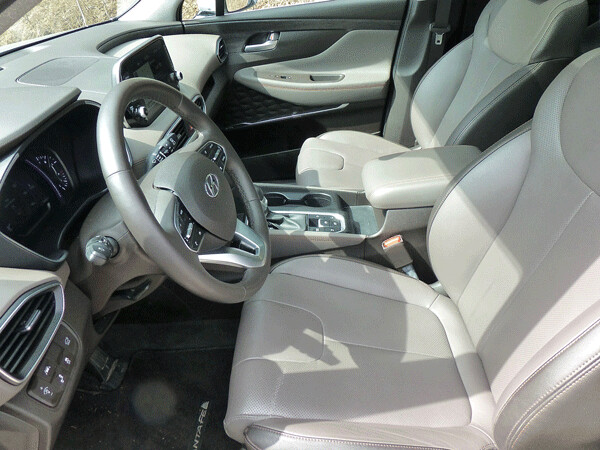
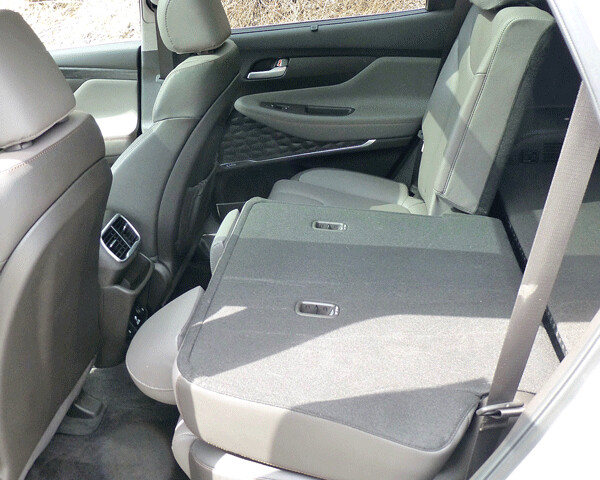
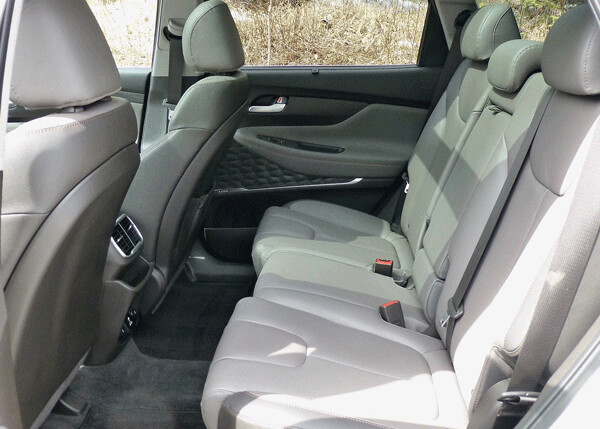
Several months have passed, and now the Santa Fe has gotten beyond its introduction and can be found in showrooms nationwide. But up here in Northern Minnesota, its timing couldn’t have been better. This has been the winter that never ended, so far, with a new snowstorm threatening to show up on the first weekend in May. Why wouldn’t you want an SUV with all-wheel drive?
So before we expand out consciousness to incorporate the reality that Hyundai now has seven — count ‘em, 7 — SUVs under its name, let’s give the Santa Fe its due.
Design-wise, Hyundai had used a signature six-sided grille, and it was well done, and gave a certain corporate signature to the SUVs.
Along came the subcompact Kona, with a startling new look, especially to its front end, where it has a completely different headlight arrangement, styled into a completely different look to the grille. It caught you off-guard at first, but when I got a look at first renderings of the coming Santa Fe, it made some sense.
Hyundai was going to give the new Santa Fe a frontals and rear styling that would make it similar to the Kona. It was a brilliant move, because it not only shook off any semblance of stodginess from the old Santa Fe, but it also blunted the off-the-chart appearance of the Kona,. They are brothers-in-arms, as you can see from the photo of the bigger brother Santa Fe alongside the littler brother Kona.
Strangely, to me, Hyundai did not totally redesign the in-between Tucson, choosing instead to give it what they call a “facelift,” with only a slight refinement to the established grille, and nothing like the look of the new-breed Kona and Santa Fe. What I consider a hint that change will be coming, just late, to the Tucson is that it is powered by your choice of either the tried and true 2.0 or 2.4 four-cylinder engines — neither of which benefits by Hyundai’s new-found confidence in turbocharging.
The smaller Kona has the naturally-aspirated 2.0, and also a high-tech 1.6-liter turbocharged four that kicks out over 190 foot-pounds of torque, and hauls the little Kona around with style and spunk.
The Santa Fe, on the other hand, also offers a pair of engines. One is the 185-horsepower/178-foot-pounds-of-torque 2.4-liter engine, and the other is a distinct upgrade to the 2.0-liter turbocharged four with 235 horsepower and 260 foot-pounds of torque. Once again, Hyundai crosses up conventional thinking by giving the smaller-displacement more power than the larger through the magic of turbocharging.
The Santa Fe Ultimate 2.0T has the full suite of safety and driver-alert features for lane changing, blind-spot detection, front and rear alerts including pedestrian alerts, and it also has the capability to set driving mode for sportier handling or comfort. Best of all, it has the feature I first discovered in the mountains of Utah, and was pleased to rekindle the relationship on the potholes and wintry conditions in the mountains of Duluth and the North Shore of Lake Superior. And that is the lane-assist when also can be set to different intensities.
You can set it to give you a warning when you’re wandering across the dotted center line or the stripe identifying the right shoulder. You can turn it up a notch so that it warns and also gently guides you back into your lane/ And if you go all the way to the most intense, it is called lane-centering, and it does actually keep you aligned at the center of your lane.
My wife, Joan, who loves the feature in the Kona — where it also adds to the surprising value of the smallest Hyundai SUV — so much that she sometimes experiments. I’ve done the same. Driving along a well-marked and lightly traveled highway, with the settings set full, take your hands off the steering wheel. Now, I don’t recommend this, but it makes for a fascinating experiment in this era of autonomous cars soon to come.
With your hands at the ready, and at moderate speed, the Santa Fe will gently and smoothly follow a proper trajectory around an upcoming curve to the left, and then back to the right, straightening where the road straightens. It doesn’t want you to get too comfortable, though, say comfortable to the point of being complacent. So after a few seconds with your hands ready but not touching the steering wheel, the dash come alive to say “No grip detected on wheel!” Then it advances the warning to say “Put your hands on the wheel,” and then it informs you it will shut down the feature if you don’t put your paws where they belong.

You can’t beat that. You could turn off the feature, but why would you? It gives you proper alert and then warning, and if you had a moment of inattentiveness, it could prevent a serious accident. It also will warn you and then slow you toward an intended stop if its computers, radar, sonar and what-all decide you are not planning on avoiding that problem in your path.
Anyone who says that’s taking control is saying that they would rather have an occasional fender-bender — or worse — in the name of maintaining your personal command, or lack of same.
The price of the Santa Fe ranges from the high $20,000 range to the upper reaches of the $30,000 range. Its amazing safety features are all wrapped up inside a leather and soft-touch fabrics everywhere in the interior, and the bucket seats are supportive and luxurious to the touch.
The rear seat has a 60-40 fold-down arrangement, where you can flip the seat down and it goes down to make a flat elongation of the carpeted rear stowage area.
In reality, the Santa Fe replaces the former Santa Fe, while the Santa Fe XL continues unchanged for those who have to have a third row seat. That one has the old-style but still neat Tucson-like grille, but as it sells out, don’t be surprised if the Santa Fe XL goes away and leaves only the very capable, very sporty, and very high-tech and sporty Santa Fe.
